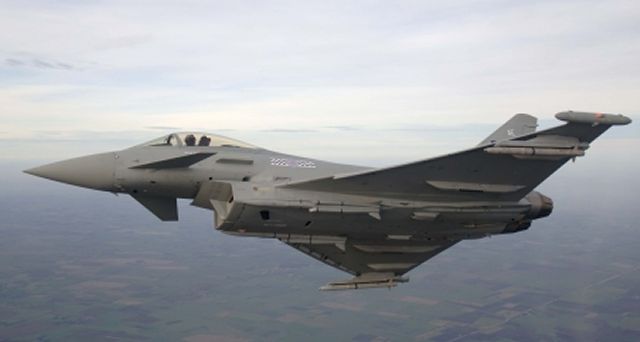Breaking news
Saudi Arabia reportedly bought MBDA's Meteor air-to-air missiles for its Typhoon fighter aircraft.
| 2015
| a | |||||
| |
|||||
World
Defense & Security News - Saudi Arabia |
|||||
| Saudi Arabia reportedly bought MBDA's Meteor air-to-air missiles for its Typhoon fighter aircraft | |||||
The
Kingdom of Saudi Arabia and European missiles manufacturer MBDA have signed
the first export contract of the Meteor active radar guided beyond-visual-range
air-to-air missile (BVRAAM), for an estimated amount of $1 bn, reports
today French newspaper La Tribune. |
|||||
 MBDA's Meteor active radar guided beyond-visual-range air-to-air missile
and Advanced Short Range Air-to-Air Missile fitted on an Eurofighter
Typhoon
MBDA's Meteor active radar guided beyond-visual-range air-to-air missile
and Advanced Short Range Air-to-Air Missile fitted on an Eurofighter
Typhoon |
|||||
The
Meteor missiles will be fitted on the 24 Eurofighter
Typhoon fighter aircraft already delivered to the Royal Saudi Air
Force, according to La Tribune. The MBDA Meteor BVRAAM was initially developed by the UK, though Germany, Italy, Spain, France, and Sweden joined the project shortly thereafter. The missiles are designed for use aboard the Eurofighter Typhoon and Gripen C/D and will be used to counter long-range airborne threats well before they threaten the nation's borders. MBDA's Meteor is an active radar guided beyond-visual-range air-to-air missile (BVRAAM) being developed by MBDA. Meteor will offer a multi-shot capability against long range manoeuvring targets in a heavy electronic countermeasures (ECM) environment with range in excess of 100 km. Each $2.2 million missile measures about 12 feet in length and 7 inches in diameter, weighs 400 pounds, and carries a blast-fragmentation warhead (though details on the the size of the package remain scarce). Its throttle-able ducted rocket (read: ramjet engine) uses a boron-heavy propellant mix to reportedly achieve a threefold increase in its specific impulse (the measure of a rocket's force—propellant consumption per unit of time) and a 300 percent larger no-escape zone than today's best ramjets. |
|||||



















